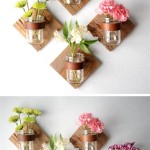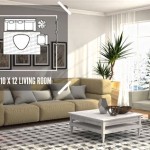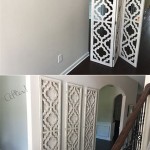Changing Room Home Decor: A Guide to Transforming Functional Spaces
Changing rooms are traditionally viewed as utilitarian spaces, primarily associated with retail environments or recreational facilities. However, the principles of changing room design can be effectively adapted and incorporated into home decor, leading to the creation of stylish, functional, and personally tailored areas within residential spaces. This article explores the potential of changing room aesthetics and organizational strategies for enhancing various areas of the home.
Optimizing Space and Functionality
A core principle of changing room design is efficient space utilization. These spaces are often compact, requiring careful planning to maximize functionality. This approach is particularly relevant for smaller homes or apartments where space is at a premium. Applying changing room principles involves a deliberate focus on streamlining and organization.
One key technique is the integration of built-in storage solutions. Consider incorporating custom shelving units, drawers, and cabinets into areas such as bedrooms, bathrooms, or entryways. These storage solutions can be designed to accommodate specific items, promoting a clutter-free environment. For example, a built-in wardrobe in a bedroom, configured with adjustable shelves and hanging rods, can provide ample space for clothing and accessories, mimicking the organization found in high-end retail changing rooms.
Mirrors are another essential element. Strategically placed mirrors can create the illusion of greater space and enhance natural light. Full-length mirrors, common in changing rooms, are particularly effective in bedrooms and dressing areas. Additionally, incorporating mirrors into closet doors or on storage units can further maximize space and functionality.
Seating is also crucial for comfort and convenience. Adding a bench, ottoman, or chair to a dressing area or bedroom allows for comfortable dressing and undressing. The choice of seating should complement the overall design aesthetic and provide practical support. Consider upholstered options for added comfort or minimalist designs for a more contemporary look.
Clever storage solutions are key to space optimization. Utilize storage bins, baskets, and dividers to keep items organized and easily accessible. These containers can be placed on shelves, in drawers, or under beds to maximize storage capacity. Consider using clear containers to easily identify contents without having to unpack them, a design element often employed in retail changing rooms to facilitate efficient shopping.
Integrating Style and Aesthetics
While functionality is paramount, the aesthetic appeal of changing rooms should not be overlooked. Modern changing room designs often incorporate stylish elements to create a welcoming and visually appealing environment. These elements can be adapted to enhance the overall decor of various rooms in the home.
Lighting plays a crucial role in setting the mood and enhancing functionality. Layered lighting, combining ambient, task, and accent lighting, can create a well-lit and visually appealing space. Recessed lighting provides ambient illumination, while task lighting, such as vanity lights or spotlights, focuses on specific areas for dressing and grooming. Accent lighting can be used to highlight artwork or architectural features, adding depth and visual interest.
Color palettes can significantly impact the overall atmosphere of a space. Neutral colors, such as beige, gray, and white, are popular choices for creating a calming and sophisticated environment. These colors can be complemented with pops of color through accessories, artwork, or textiles. Consider using a cohesive color scheme throughout the room to create a sense of harmony and visual flow.
Textiles and textures can add warmth and depth to a space. Consider incorporating soft rugs, plush cushions, and textured fabrics to create a comfortable and inviting atmosphere. Layering different textures, such as velvet, linen, and wool, can add visual interest and enhance the overall aesthetic. For example, a faux fur rug placed in front of a dressing table can add a touch of luxury and comfort.
Accessories and artwork can personalize the space and reflect individual style. Incorporate decorative mirrors, framed artwork, and stylish storage containers to add visual interest and personality. Consider using a consistent theme or style throughout the room to create a cohesive look. For instance, a collection of vintage jewelry displayed on a decorative tray can add a touch of glamour to a dressing area.
Pay attention to the details. High-quality hardware, such as drawer pulls and cabinet knobs, can elevate the overall look and feel of the space. Consider using stylish hooks or hangers to display clothing and accessories. These small details can make a significant difference in the overall aesthetic of the room, reflecting a level of attention to detail commonly found in well-designed changing rooms.
Adapting Changing Room Elements to Specific Home Areas
The principles of changing room design can be applied to various areas of the home, creating tailored spaces that are both functional and aesthetically pleasing. Here are some examples of how to adapt these elements to specific rooms.
Bedrooms: Transforming a bedroom into a private dressing sanctuary involves strategic storage solutions, optimal lighting, and comfortable seating. Incorporate a built-in wardrobe with custom shelving and hanging rods. Add a full-length mirror and a comfortable bench or ottoman. Use layered lighting to create a well-lit and inviting space. Consider adding a vanity area with a lighted mirror and storage for makeup and accessories. The goal is to create a dedicated area for dressing and grooming that is both functional and stylish.
Bathrooms: Bathrooms can benefit significantly from changing room principles, particularly in terms of organization and space utilization. Incorporate storage units for toiletries, towels, and other bathroom essentials. Use mirrors to enhance natural light and create the illusion of greater space. Add a comfortable bench or stool for applying lotions and creams. Consider adding a robe hook or towel rack for convenience. The aim is to create a bathroom that is both functional and relaxing, mirroring the efficiency and comfort of a well-designed changing room.
Entryways: Entryways are often overlooked but can be transformed into functional and stylish spaces by applying changing room principles. Incorporate a coat rack or wall-mounted hooks for hanging outerwear. Add a bench or chair for putting on and taking off shoes. Use storage bins or baskets for organizing shoes and accessories. Consider adding a mirror for quick checks before leaving the house. The goal is to create an entryway that is both welcoming and practical, providing a designated area for transitioning between indoors and outdoors.
Walk-in Closets: Walk-in closets are prime candidates for adopting changing room design principles. Maximize storage space with custom shelving, drawers, and hanging rods. Install adjustable shelves to accommodate items of different sizes. Use dividers and organizers to keep items neatly arranged. Add a full-length mirror and a comfortable bench or ottoman. Consider adding a dressing area with a vanity and lighted mirror. The aim is to create a walk-in closet that is both functional and luxurious, providing a dedicated space for organizing and selecting clothing and accessories.
Laundry Rooms: Even laundry rooms can benefit from changing room aesthetics. Incorporate ample storage for detergents, fabric softeners, and other laundry supplies. Install a folding counter or table for convenience. Add a hanging rod for drying clothes. Use storage bins or baskets for organizing laundry items. Consider adding a mirror to check your appearance before leaving the house. The goal is to create a laundry room that is both functional and aesthetically pleasing, transforming a mundane chore into a more enjoyable experience.
By adapting the principles of changing room design, homeowners can transform ordinary spaces into stylish, functional, and personally tailored areas. This approach involves a deliberate focus on space optimization, style integration, and adaptation to specific home areas, resulting in enhanced comfort, convenience, and visual appeal.

2025 的300 个最佳changing Room 点子

Neo Classic Dressing Room Home Decor

7 Small Dressing Room Ideas Every Stylish Home Owner Would Love

Home Decorating Modern Small Dressing Room Ideas In 2025 Decor Luxury Closets Design Guest Bedroom

Designing Ideas For The Dressing Room Post Wedding

Dressing Room To Home Office Steven And Chris

Dressing Room Home Decor

New The 10 Best Home Decor With S We Care About Your Needs Modernist Dressing Room Dream House Celmar Moveis Planejados Interiores

Elegant Dressing Room In Luxury Villa Homify

40 Ingenious Bedroom Closet Ideas And Designs Renoguide N Renovation Inspiration Home Decor Design Room
Related Posts







